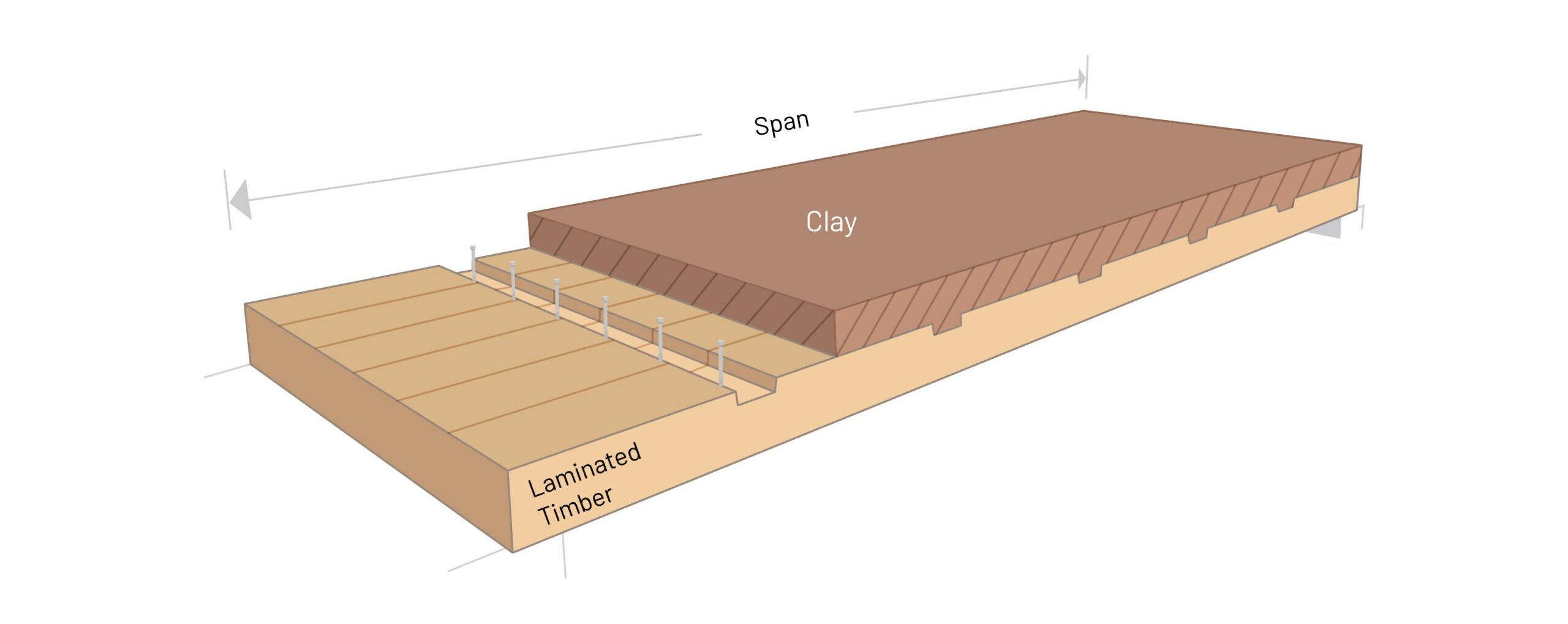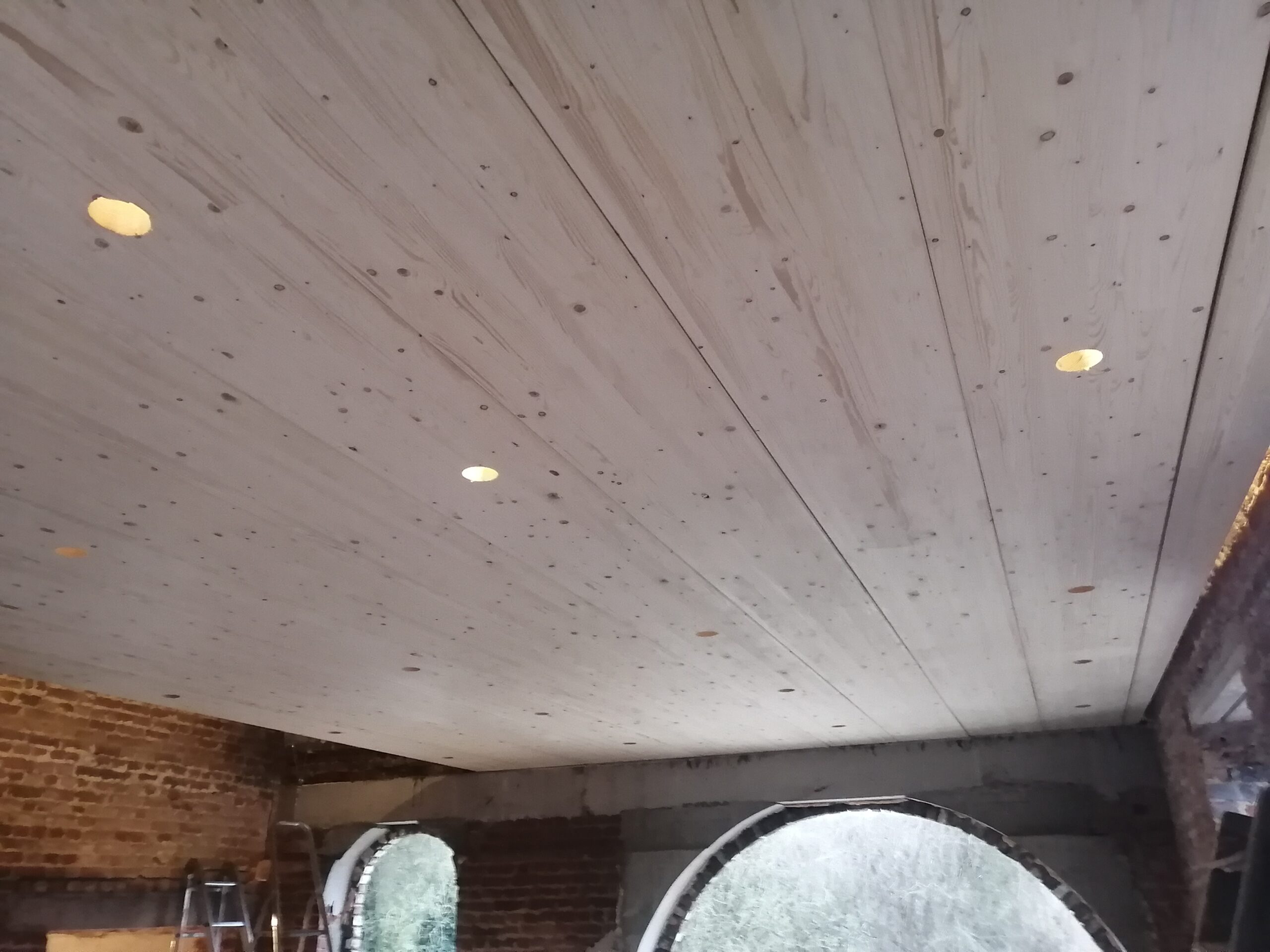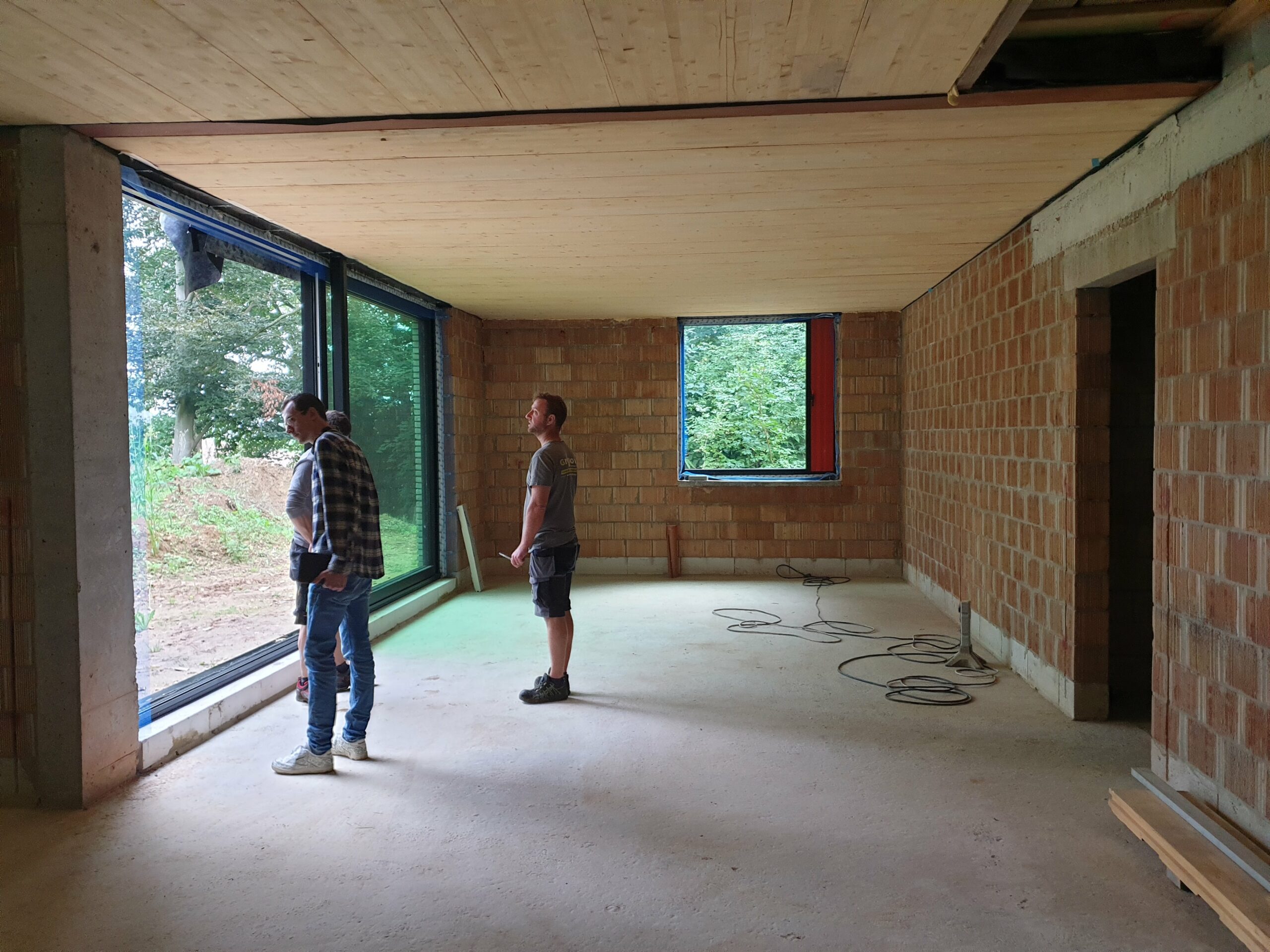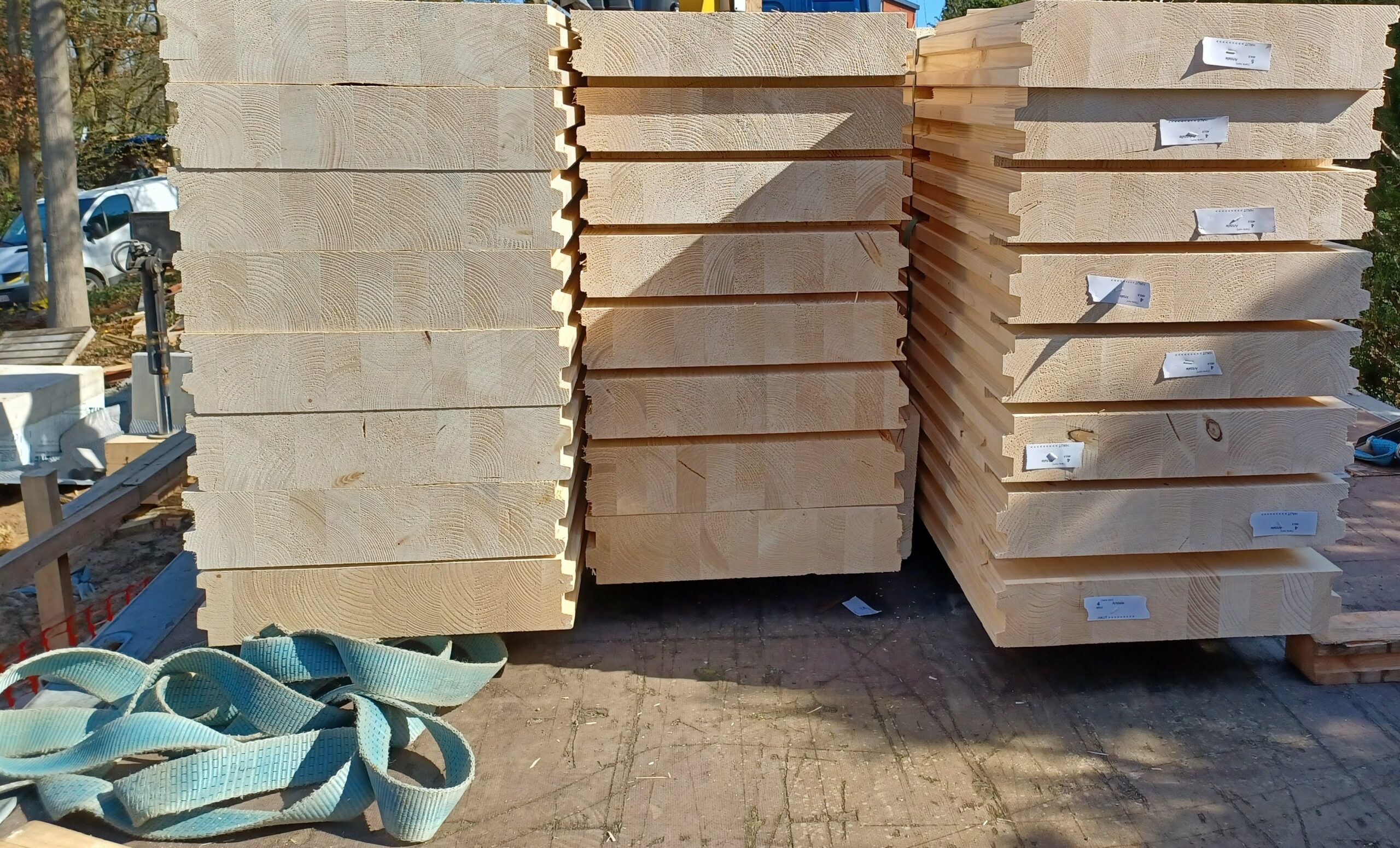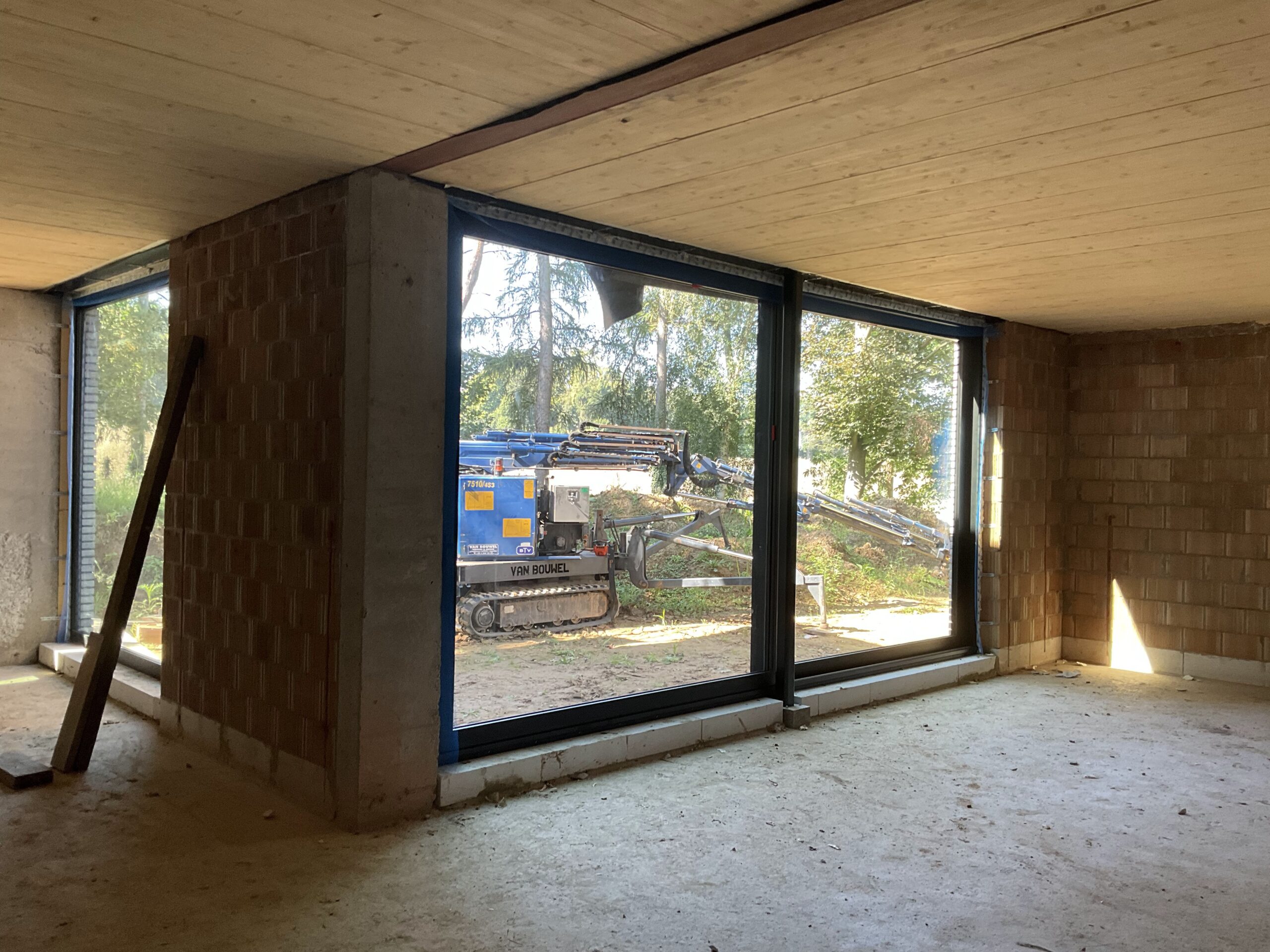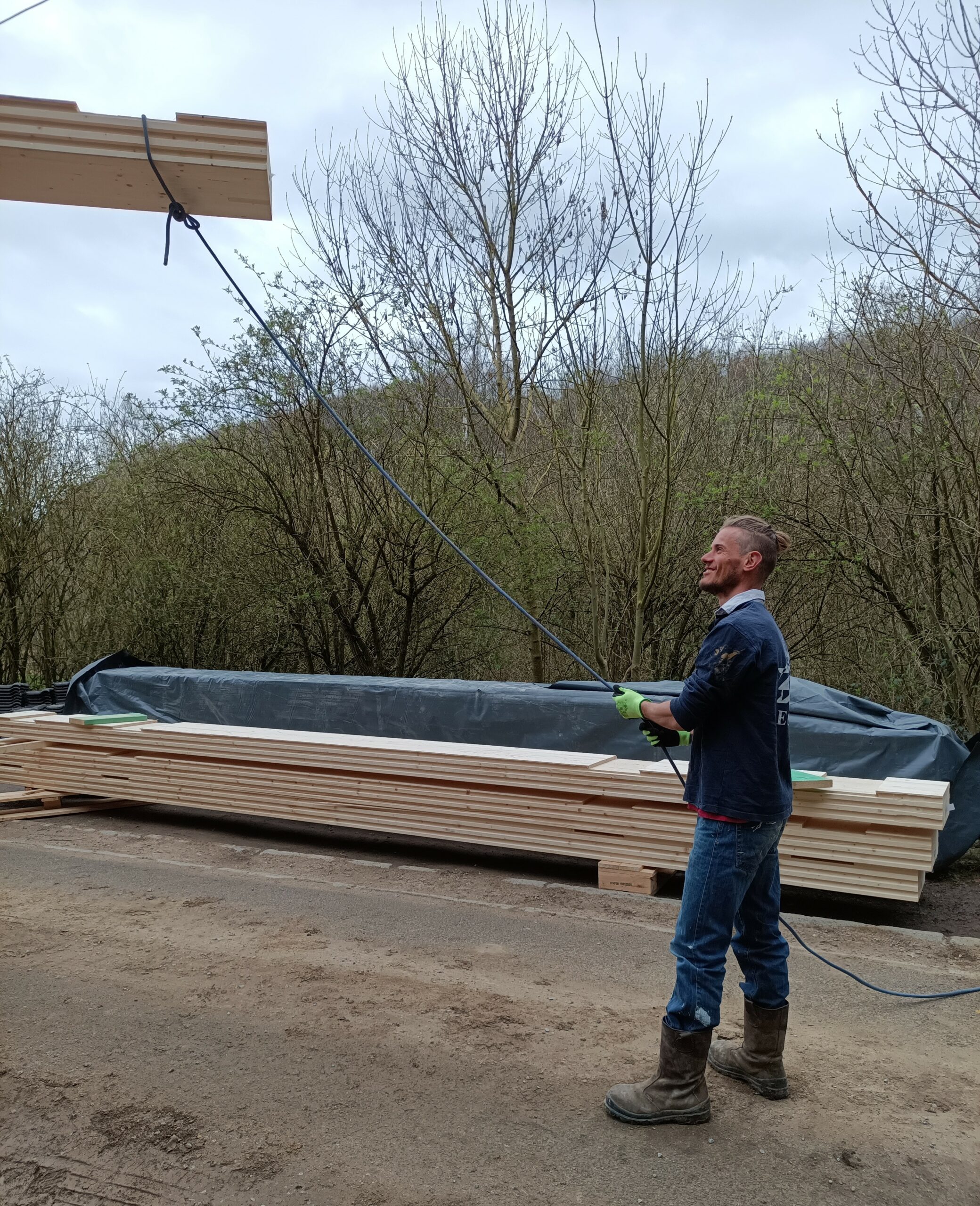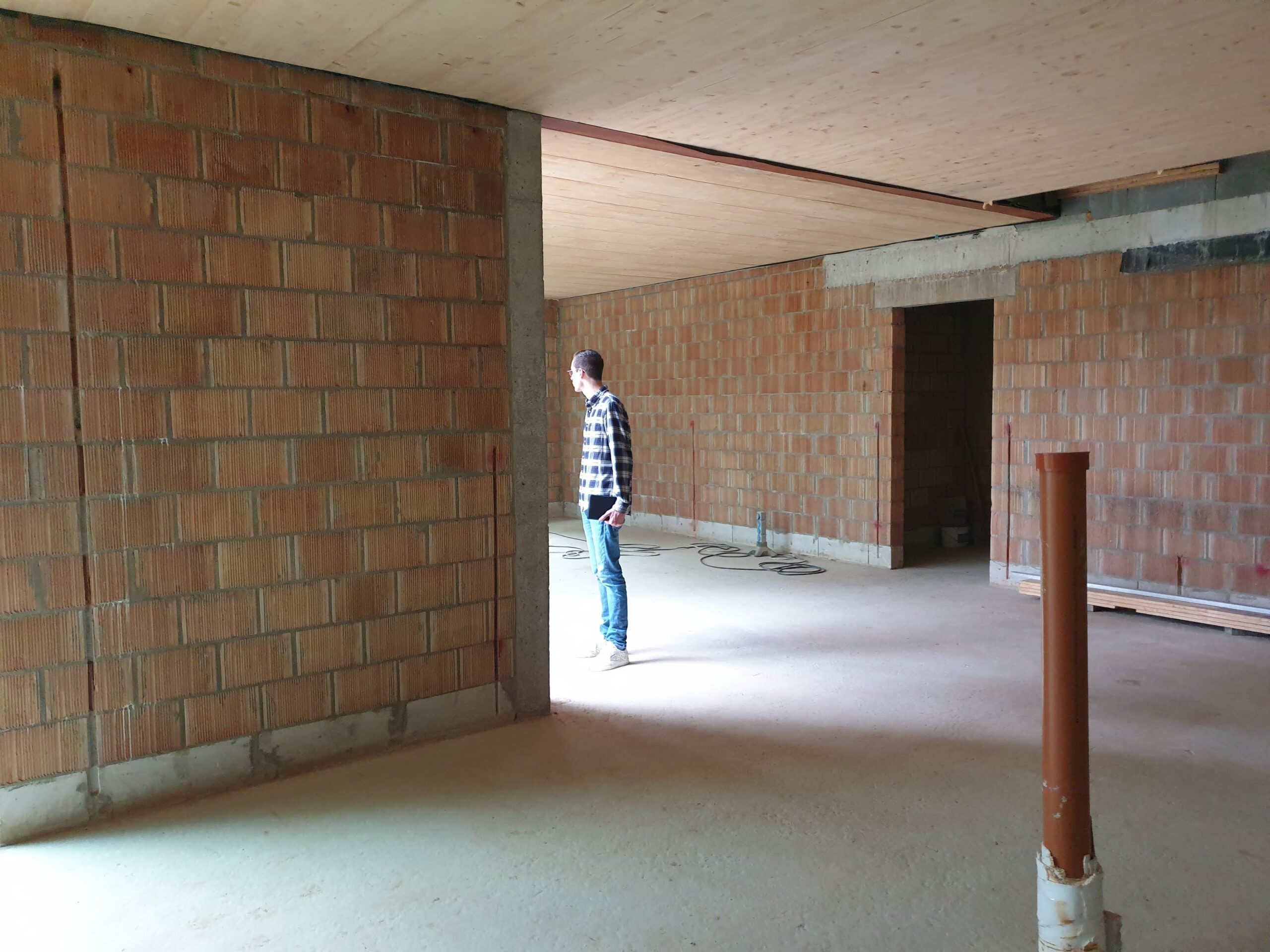Concept
The Timber Clay concept is a combination of timber and clay structurally linked.
The combination is ideal for acoustic properties, stiffness, thermal inertia and mechanical strength.
Problem
Solution
With Timber Clay, the concept optimizes our precious wood resource by proposing the collaboration of two materials: wood and clay. This fruitful collaboration makes it possible to increase stiffness and limit the deflection while adding mass to obtain good acoustic properties.
Find out more about Timber Clay ...
Pictures
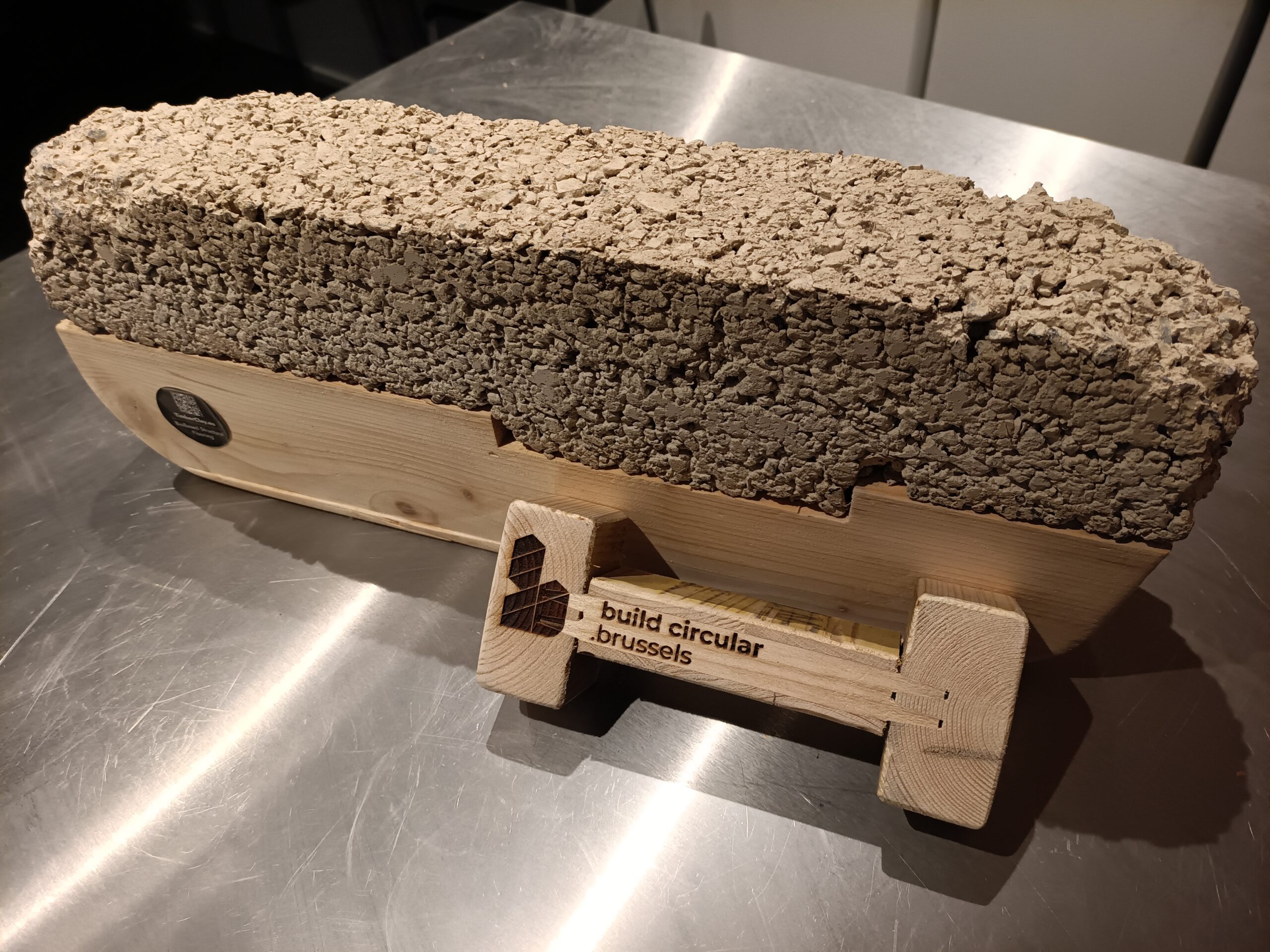
ACOUSTIC PROPERTIES
Acoustic engineers often recommend using mass and materials with different resonance frequencies to improve acoustic insulation between two homes. That's what we've done at this test home in 2023 in Belgium.


STIFFNESS
Long-term bending tests were carried out over a period of 6 months under heavy load. The deflection of the TimberClay floor are significantly lower than those of an equivalent solid timber floor (CLT).
THERMAL INSULATION and HUMIDITY MANAGEMENT
We have placed clay and concrete samples in climate chambers (humidity and temperature controlled) at Buildwise and the shrinkage of the test specimens in clay are significantly less than in concrete.


MECHANICAL RESISTANCE
The mechanical strength of the clay and the notched bond between clay and timber and between concrete and timber has been tested in the Buildwise laboratories. The results are very good compared to the compressive resistance of the materials.
Lab Tests
full-scale worksite
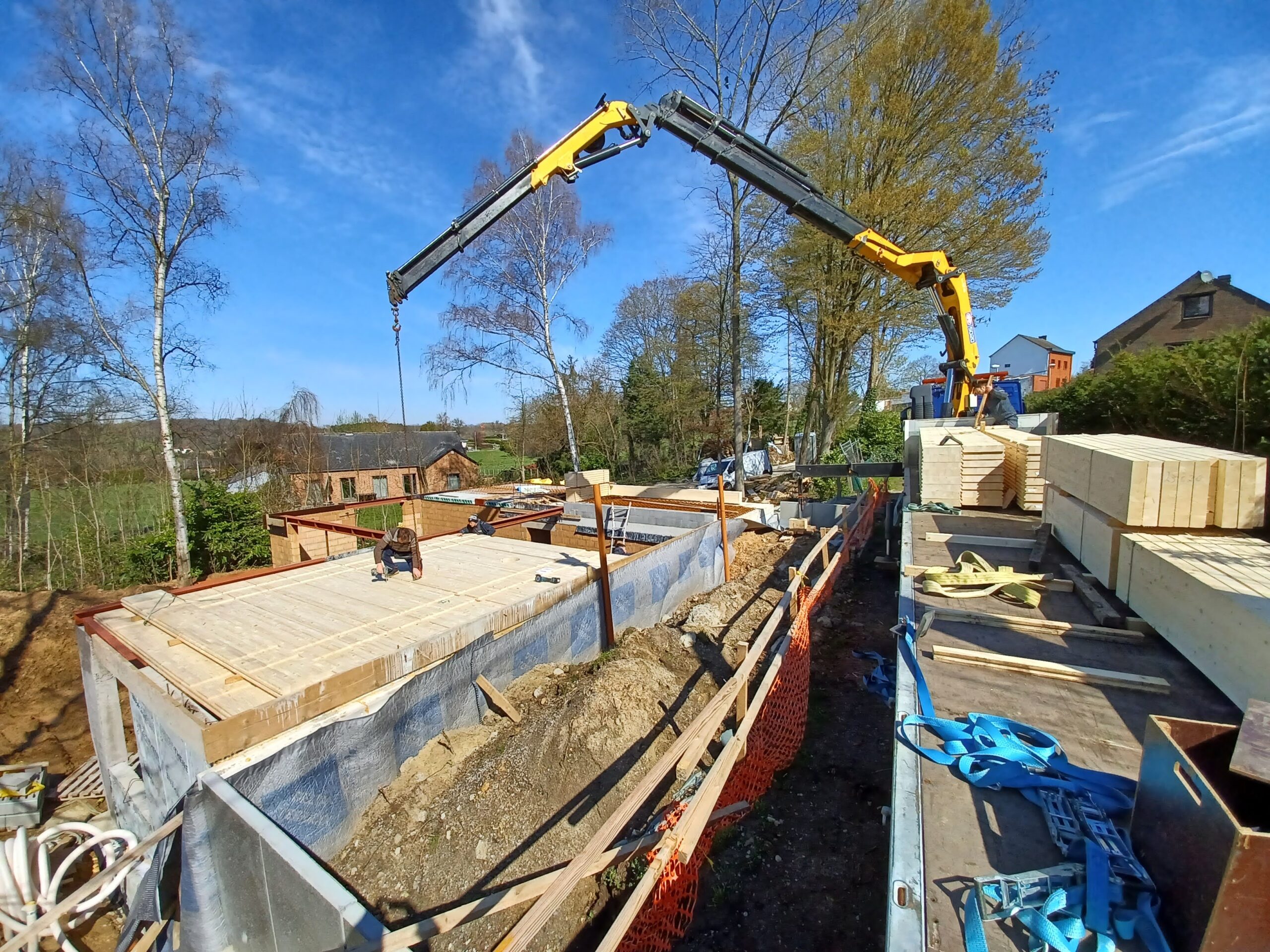
Shear strength at the Buildwise Test Lab
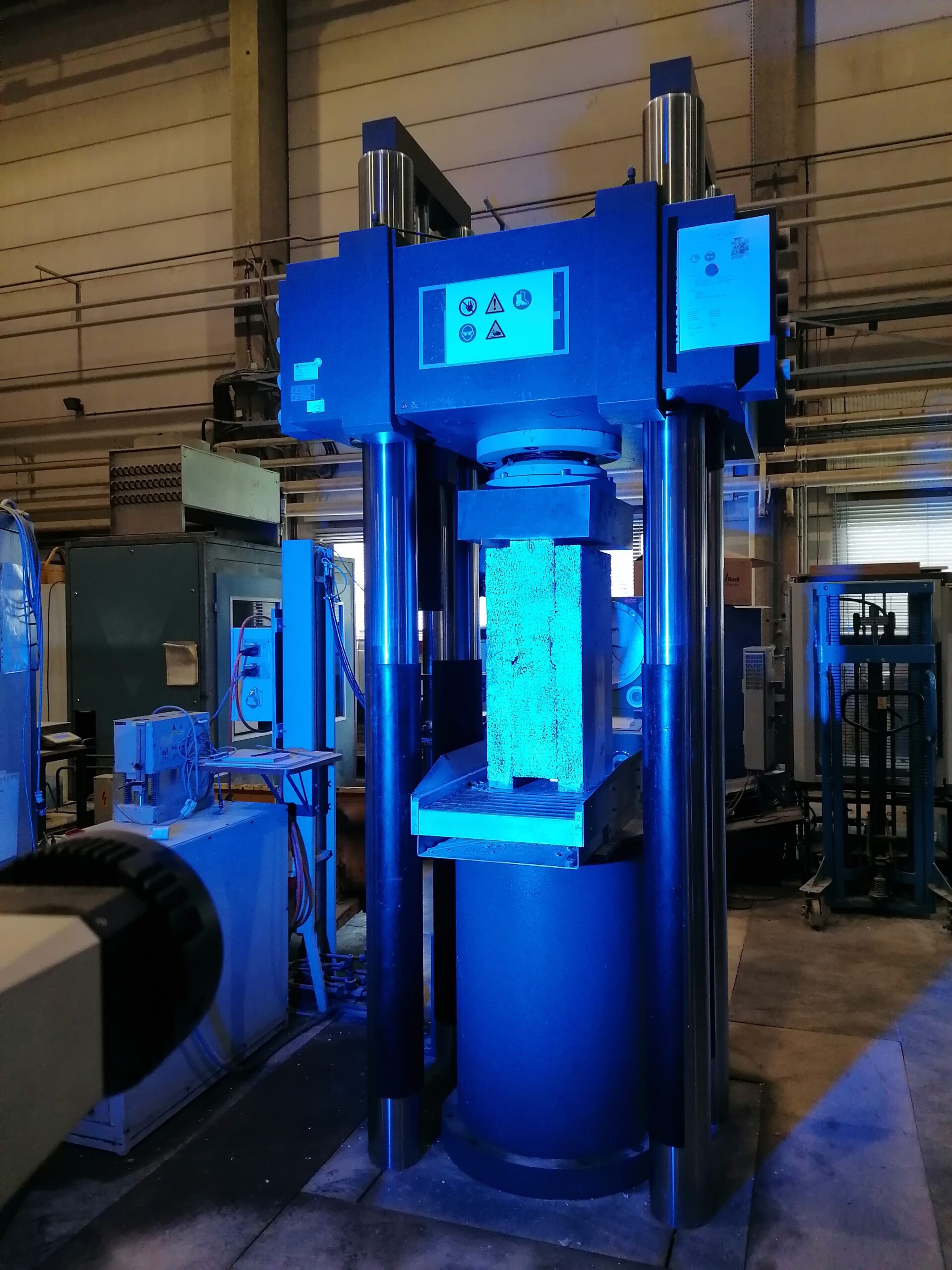
Bending deformation
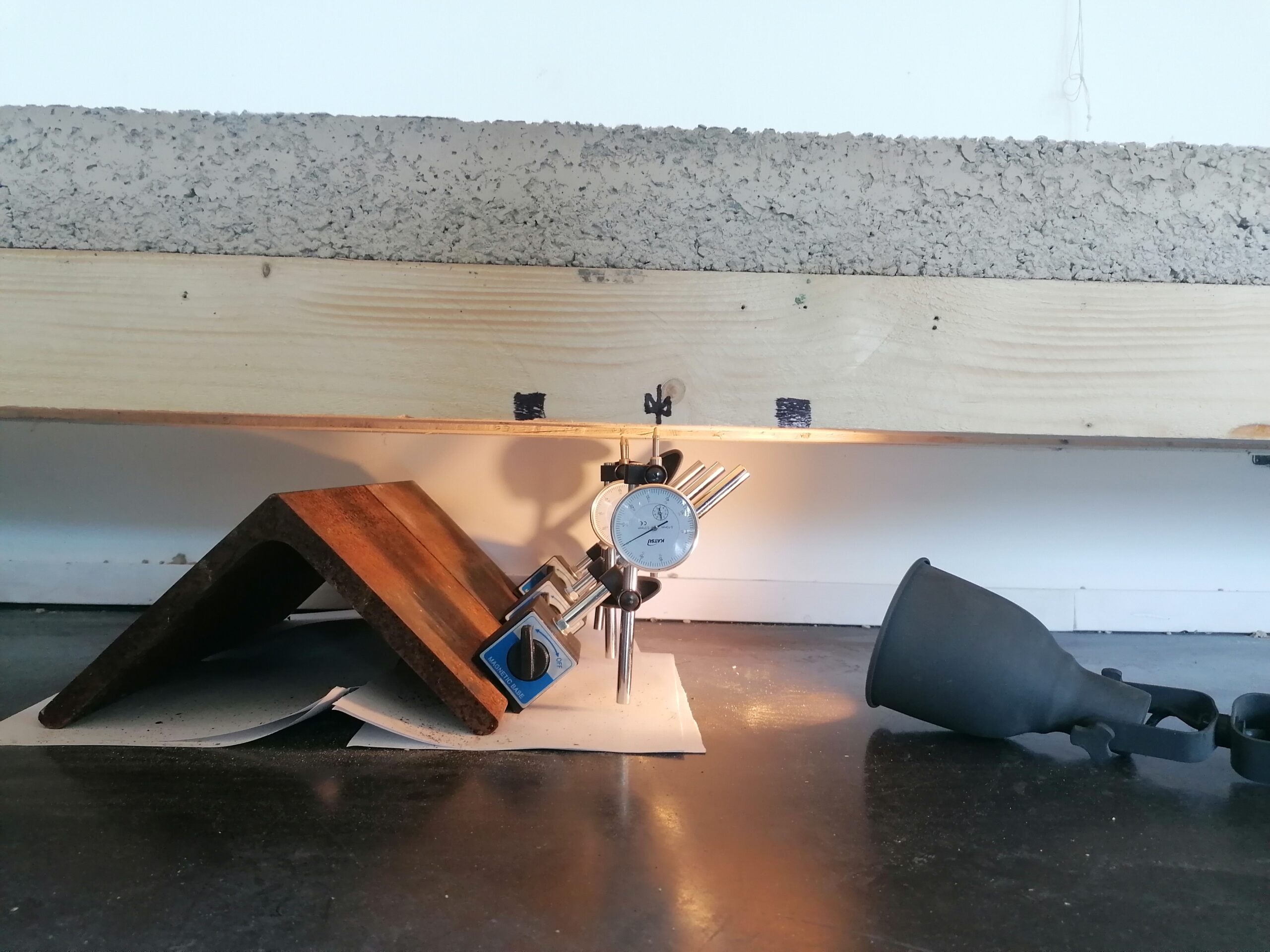
Shrinkage tests in air-controlled rooms at the Buildwise Tests Lab
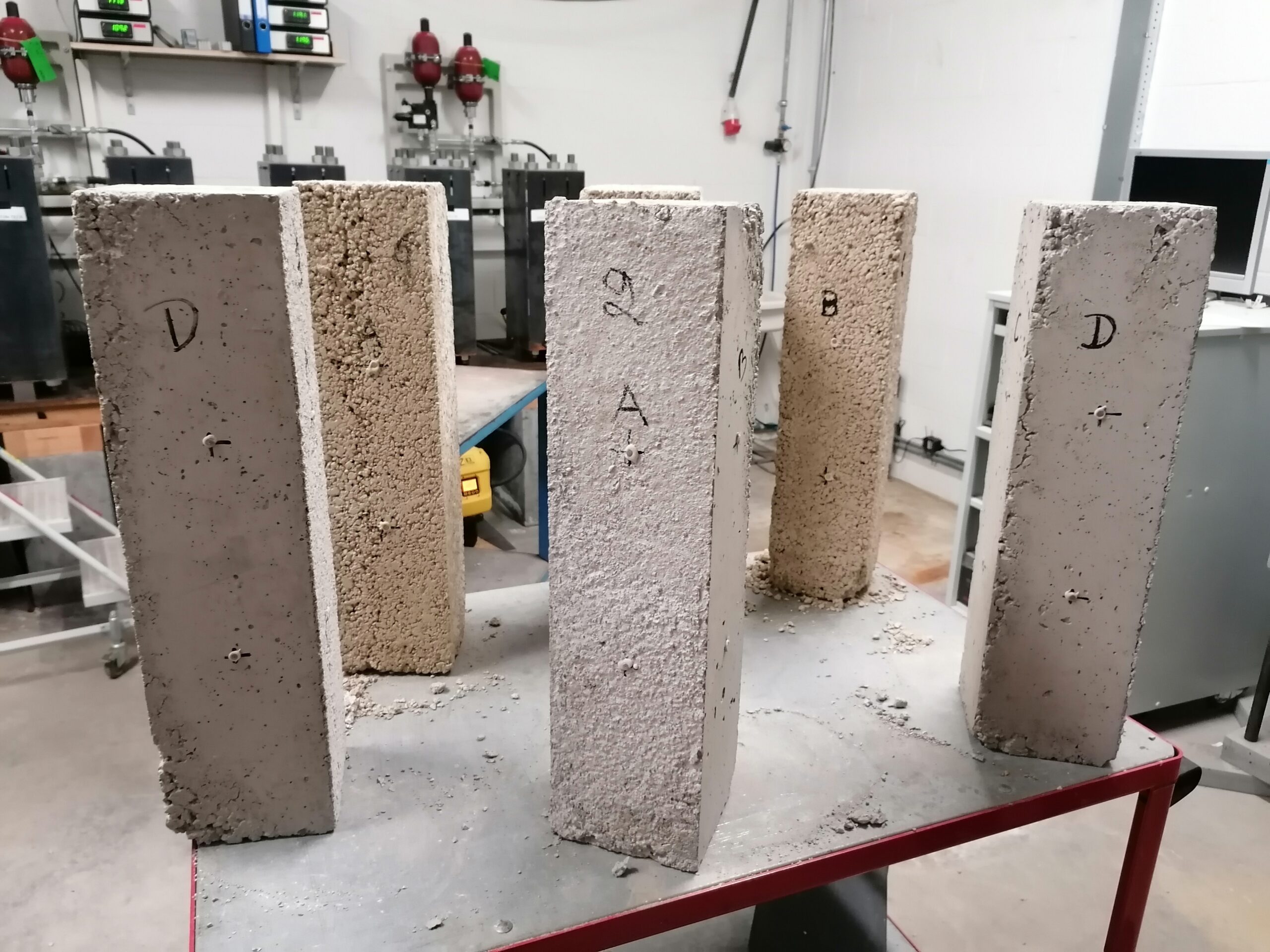
Bio-based materials
For structural clay screed, we use widely available clay, gravel, a binder and water.
Partners
WE'RE FULL OF IDEAS...
BUT WHY MAKE THIS ONE CONCRETE?
Finding no. 1
ACOUSTICS PROBLEMS ARE OFTEN SOLVED BY ADDING A CEMENT SCREED
In existing multi-family housing buildings, for acoustic reasons designers often add massive building materials typically a cement screed to meet acoustic criteria.
— Avec Timber Clay, cette masse utile à l’acoustique et au passage des techniques n’est plus à base de ciment mais d’clay-based
Finding no. 2
CLT BUILDINGS REQUIRE LARGE VOLUMES OF TIMBER TO LIMIT FLOOR DEFORMATION
When sizing a timber beam or floor, the stability engineer checks several criteria. Almost all the time, it's not the breaking strength but the rigidity to deformation of the wood that is the most constraining design parameter, and which requires an increase in the volume of wood.
- With Timber Clay, the clay prevents the wood from warping. So for the same deformation you need a lower volume of wood
Contact
Don't hesitate to contact us :-)

